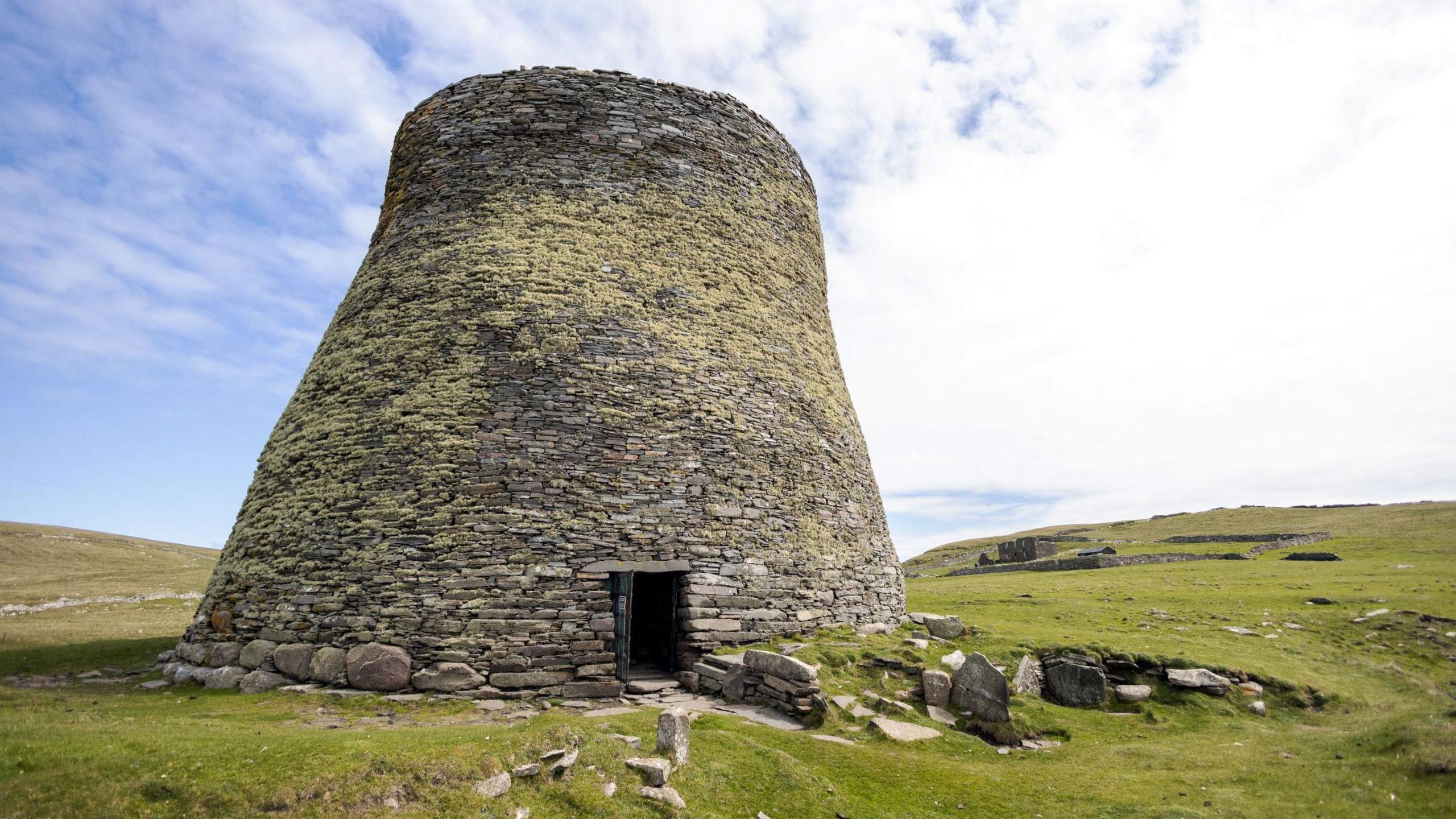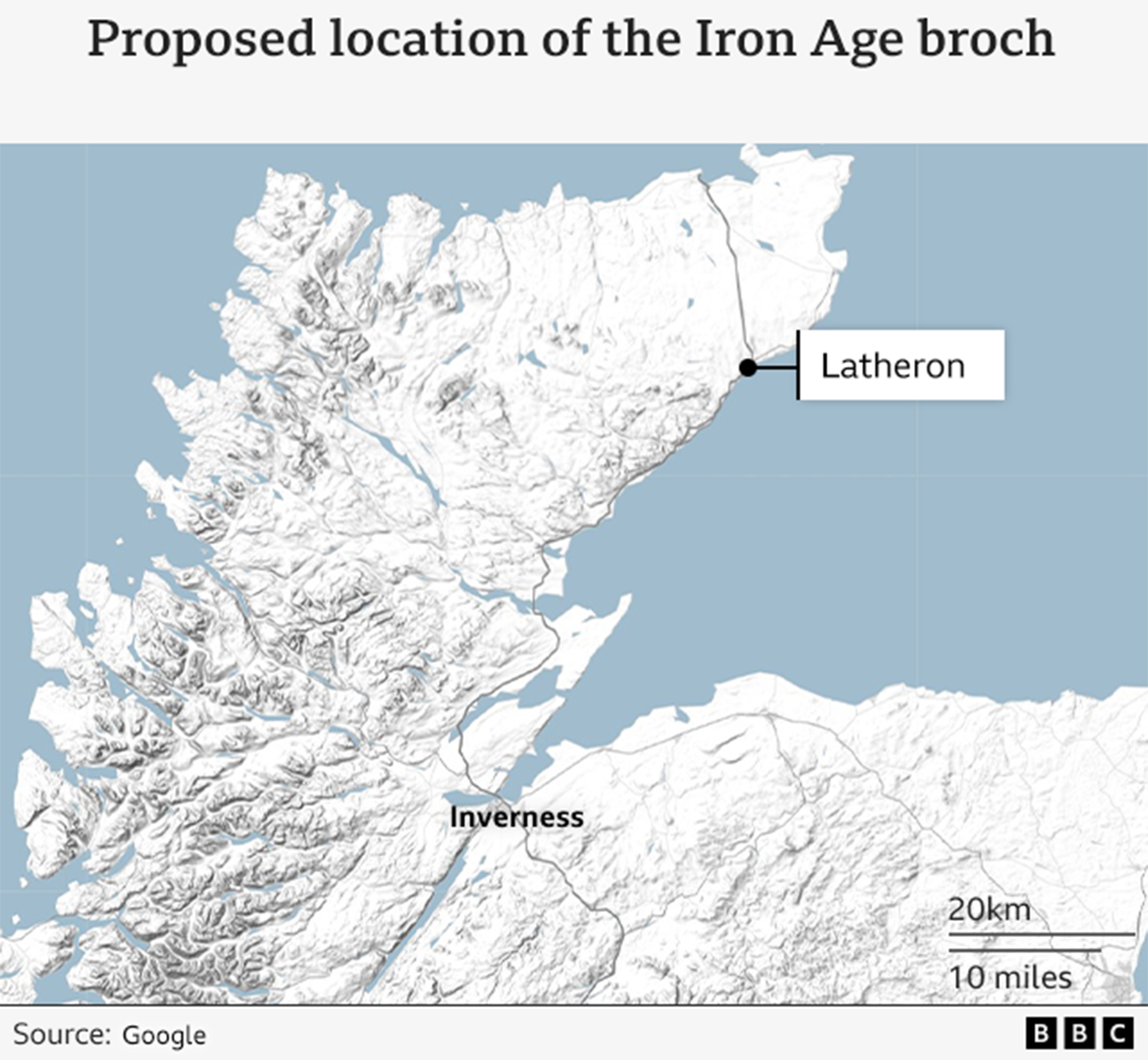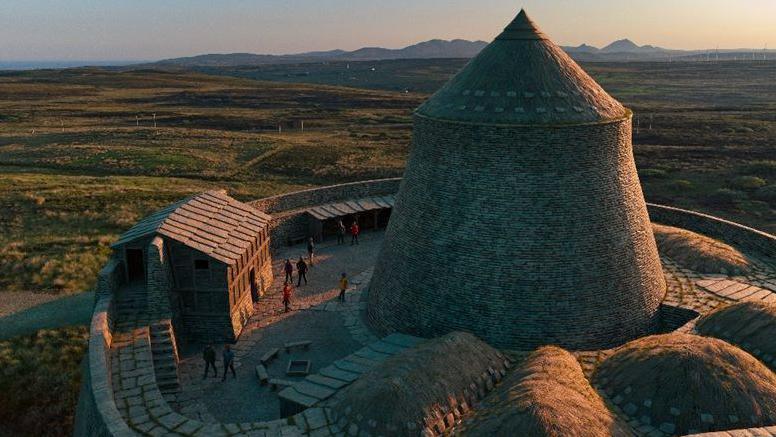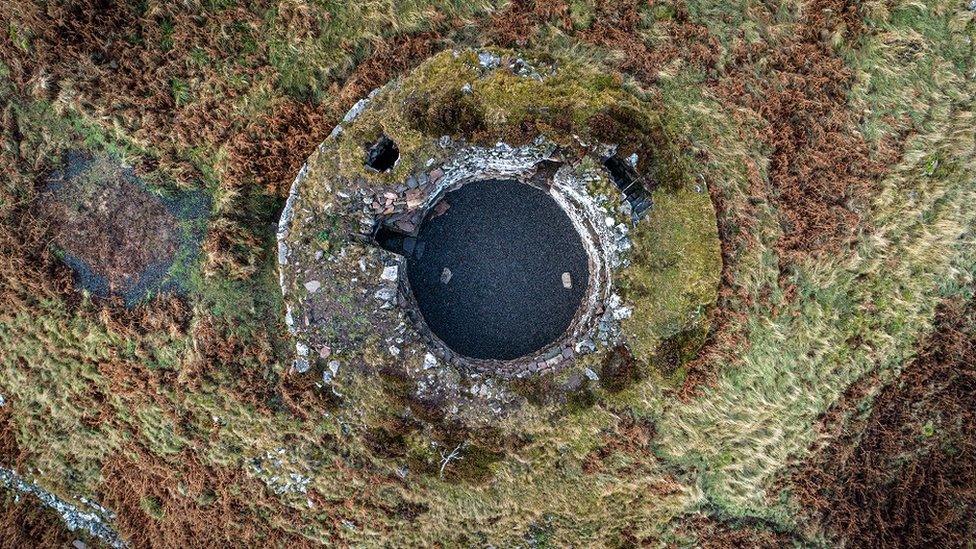Plan approved to build Scotland's first broch in 2,000 years

The remains of a broch in Mousa, Shetland
- Published
A plan to recreate an Iron Age broch in Caithness has moved a step forward after the scheme was granted planning permission.
Brochs - tall, double-walled drystone towers - have only ever been found in Scotland.
Ruins of the fortified houses survive in parts of the Highlands, Western Isles, Orkney and Shetland.
The Caithness Broch Project's tower is proposed for a site near Latheron, south of Wick and would be the first to be constructed in 2,000 years.
Planning permission was approved by Highland Council officials under delegated powers. The approval was first reported by the John O'Groat Journal and Caithness Courier, external.
The initiative still has to secure all the funding it needs to construct the replica broch.
In August, the Flow Country Partnership and University of the Highlands and Islands' North, West and Hebrides division joined the project.
One idea they are developing is to make the broch the official eastern gateway to the Flow Country Unesco World Heritage Site, a large area of protected blanket bog.

Caithness Broch Project said securing planning permission was an important step in a "long journey".
Dawn Mackay, one of the directors, said: "It's really exciting and it has taken a long time to get to this point.
"The charity was formed 13 years ago - it hasn't taken that long to get planning permission - but it has taken a long time to find the site."
She said it now had a site on about 230 acres, and also support from a landowner who is keen to see the project to succeed.
Ms Mackay said the broch would be an archaeological experiment and traditional drystone building techniques would be used in its construction.
What is a broch?

A visualisation of the proposed replica broch
Brochs date back to 2,000 years ago and some of the structures were more than 18m (40ft) to the top of their conical turfed roofs.
It is thought they were used as dwellings, perhaps for local chieftains.
Caithness is home to more than 200 broch sites - more than any other part of Scotland.
"Most of them tend to be piles of stone which have been plundered for walls and houses over the years," said Dawn Mackay.
She said the replica would take a long time to build, adding: "It is such an unusual project.
"No one has ever done it before."
Places where the ruins of brochs can be seen include Mousa in Shetland, Ousdale north of Helmsdale, and Glenelg in the west Highlands.
In Scotland, the Iron Age began about 2,800 years ago and was period when people first started using iron tools.
It ended about 1,600 years ago.
Related topics
- Published8 December 2020
